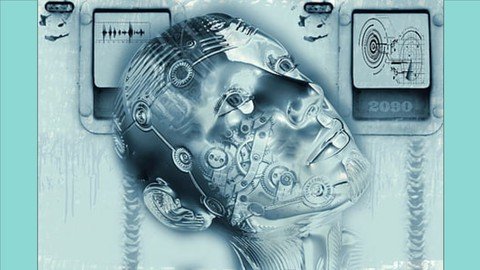
Published 07/2022
Genre: eLearning | MP4 | Video: h264, 1280x720 | Audio: AAC, 48.0 KHz
Language: English | Size: 1.78 GB | Duration: 23 lectures • 4h 45m
and enter a Kaggle competition
What you'll learn
Students will be introduced to Natural Language Processing (NLP).
Students will be introduced to the Natural Language Toolkit (NLTK) library.
Students will be introduced to the spacy library.
Students will be introduced to the sklearn machine learning library.
Students will be introduced to using the NLTK library to make predictions on the IMDB movie reviews dataset.
Students will be introduced to Kaggle to make predictions on the COV19 tweets dataset.
Students will be given the opportunity to enter the Disaster Tweets competition using the sklearn library.
Students will be given the opportunity to enter the Disaster Tweets competition using the spacy library.
Requirements
Students should have taken the How to enter a Kaggle competition course, written by the same course creater.
Students should have a basic understanding of the Python programming language.
Description
This course is intended to give learners and introduction to Natural Language Processing (NLP) and give them the skills they need to enter a Kaggle competition focusing on NLP.
The learners will be introduced to the Natural Language Tool Kit (NLTK), Spacy, and the sklearn machine learning library.
The course is broken down into three sections, being an introduction to NLP, practice projects, and lastly the chance to enter a Kaggle competition.
In the introductory section of this course, the leasrner will be introduced to:-
1. Natural Language Tool Kit (NLTK)
2. Tokenization
3. Frequency distribution
4. Stop words
5. Unigrams, bigrams, trigrams and ngrams
6. Stemming
7. Lemmatization
8. Part of speech tagging
9. Named entity recognition
10. Spacy
11. Chunking
12. Chinking
13. Machine learning
14. Deep learning
In the practice session of the course the learner will work on projects from the sklearn machine learning library, NLTK and spacy:-
1. Countvectorizer
2. Countvectorizer and TfIdfTransformer
3. Difference between vectorizers in sklearn
4. How to use feature hashers in sklearn
5. DictVectorizer
6. Cosine similarity
7. IMDB movie reviews using NLTK
8. COV19 tweets using spacy and Kaggle Jupyter Notebook
In the final part of the course, Kaggle competition, the learner will be given the opportunity to enter a Kaggle competition:-
1. Disaster tweets competition using sklearn
2. Disaster tweets competition using spacy
Who this course is for
This course is for individuals who would like to learn the basics of Natural Language Processing (NLP) and enter Kaggle competitions on the subject.
Homepage
https://www.udemy.com/course/learn-natural-language-processing-nlp/
https://rapidgator.net/file/26e0c0ac5c681b5cc37161fd7761cc56/hwxgz.Learn.Natural.Language.Processing.NLP.part2.rar.html
https://rapidgator.net/file/fad1cc8fc9070122e116f047dea1c58d/hwxgz.Learn.Natural.Language.Processing.NLP.part1.rar.html

https://nitro.download/view/ACCC5F665E77ABB/hwxgz.Learn.Natural.Language.Processing.NLP.part2.rar
https://nitro.download/view/BF2C603FB8A4567/hwxgz.Learn.Natural.Language.Processing.NLP.part1.rar

https://uploadgig.com/file/download/22902dd2f8fCfbbd/hwxgz.Learn.Natural.Language.Processing.NLP.part2.rar
https://uploadgig.com/file/download/4bd343b91515ee3D/hwxgz.Learn.Natural.Language.Processing.NLP.part1.rar
